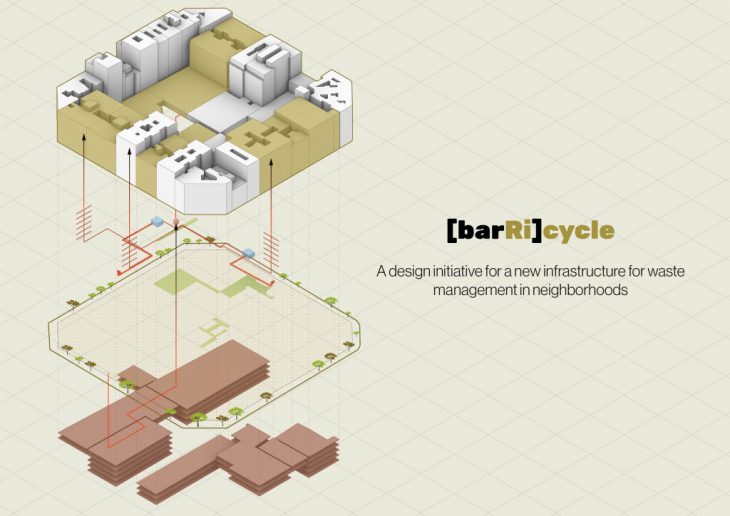[barRi]cycle explores ways to implement decentralized waste management infrastructures at a neighborhood scale, optimized to the necessities of the neighborhood.
![]()
This project will be presented into three parts, where it firstly analyses the regional waste management system that is currently implemented in the city of Barcelona, then demonstrates how a design methodology can be applied based on the parameters that will be extracted and finally assesses how the neighborhood will be impacted by this system.
LEARNING: waste management in the city of Barcelona
Many sources predict that almost 70% of the world’s population will live in cities by 2050, and with this increase, the world bank estimates a nearly 70% increase in waste generation, leaving us with 3.4 billion tonnes of waste to deal with. We need to rethink the functions of our built environment and the potential in our buildings, to generate power like Ellen McArthur foundation highlights. This project uses the city of Barcelona as a case study to learn about its waste management strategies.
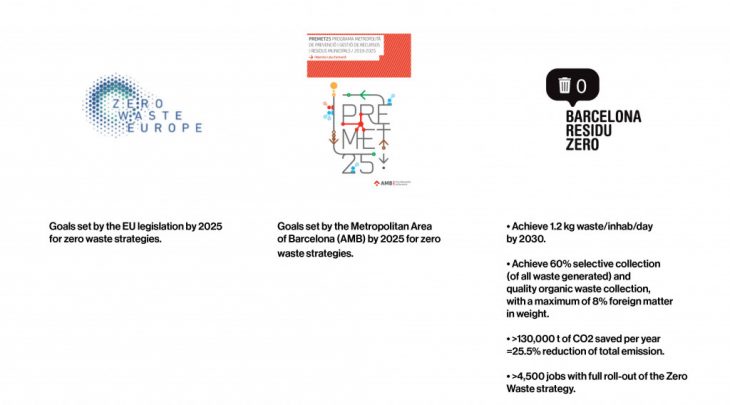
These frameworks present the strategies and the goals set for the next decades in the city of Barcelona and the metropolitan area. The key points tackled are the reduction of waste generation/cap, the increasing rate in selective collection of waste and lowering CO2 emissions from the waste management sector.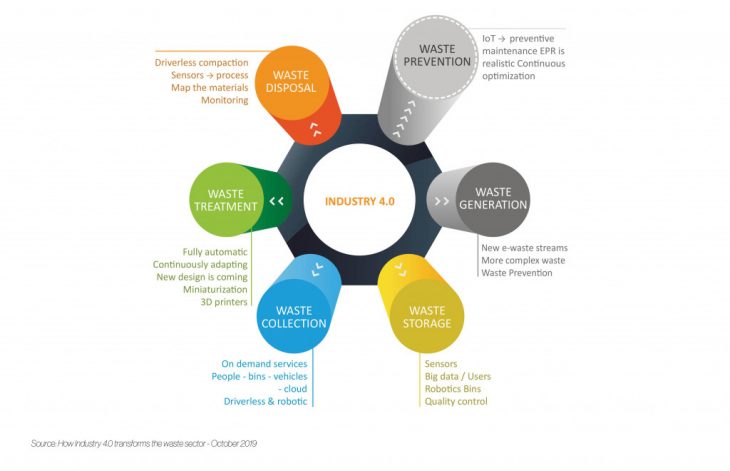
The industry 4.0 has already transformed the waste management sector by using IoT, sensors and big data which has helped in the optimization of route travels, simulation of waste generation patterns to name a few.
The city of Barcelona has implemented some of these methods in the city, notably in the waste collection sector: such as the pneumatic waste collection system in El Born and the door to door collection in Sarria.
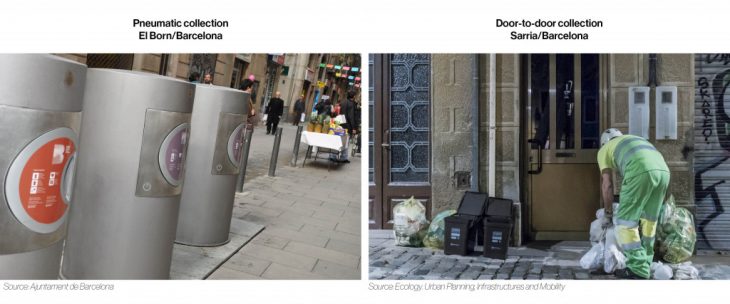
But the current waste management system as a whole still remains centralized at regional and city scale, because the waste is still transported to their facilities located on the outskirt of the city.
Learning from different recycling approaches shown in these pictures, this study can identify that potentially decentralizing waste recycling system can help to tackle some of the issue that the frameworks have highlighted. Community-based recycling and micro-scale recycling solutions in the city have positive impacts on the environment, on social acceptance and participation and waste reduction.
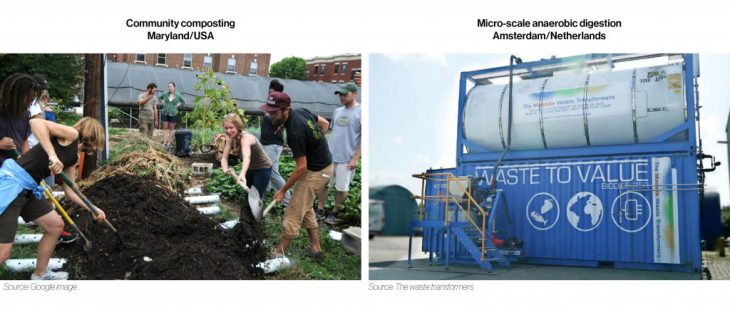
After compiling the above inferences, this project proposes a decentralized waste management system at a neighborhood scale, as illustrated in the diagram below.
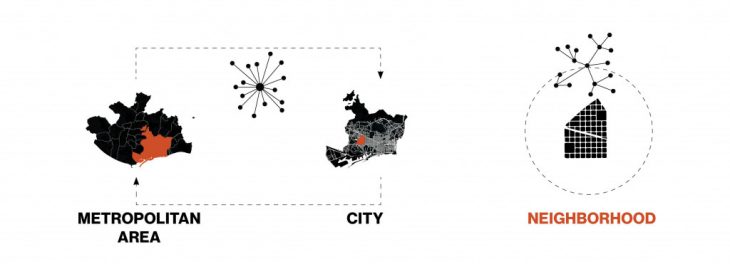
Research question
How can we implement decentralized waste management infrastructures at a neighborhood scale which is optimized to the necessities of the neighborhood?
Analysis: current situation
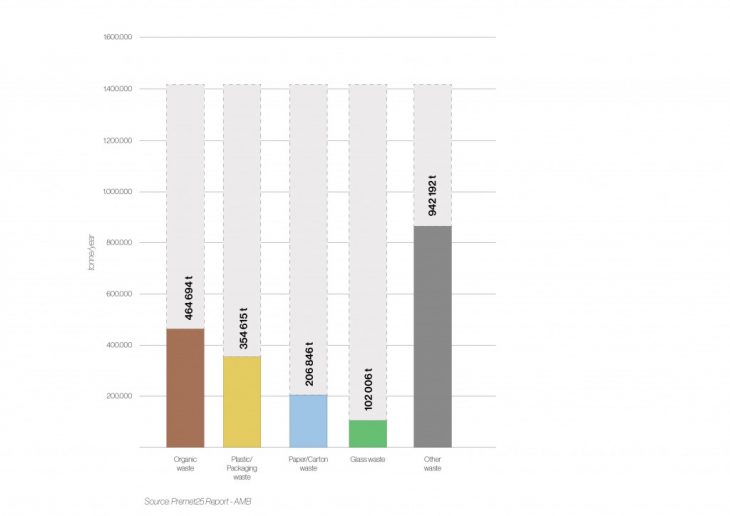
The type of waste this project will tackle is municipal solid waste, which is composed of organic waste, plastic and packaging waste, paper and carton waste, glass waste and the “rest” fraction.
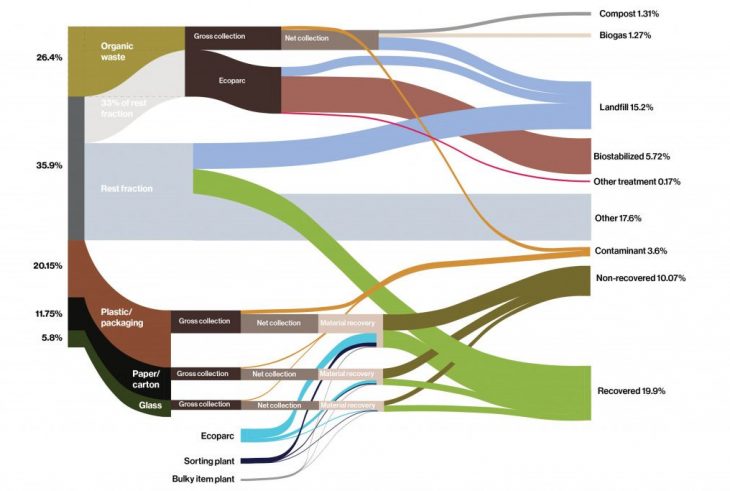
In this Sankey diagram, the data visualized is of the total amount of waste collected and treated in 2016. We can notice that 15% of waste ends up in landfill, 10% is not recovered waste, and 3.6% of the collected waste contains contaminants.
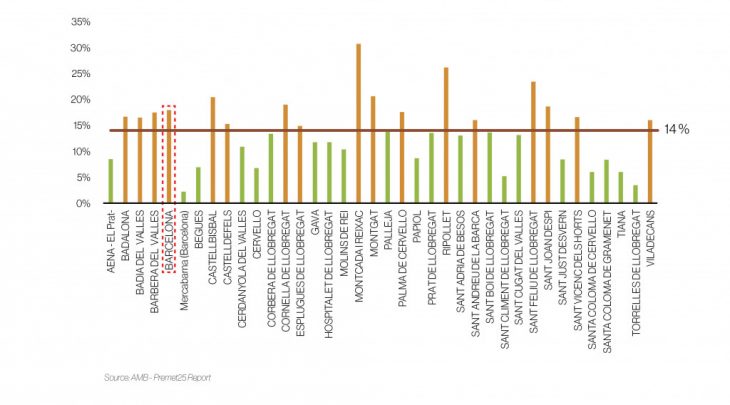 When is comes to analyse the contaminants in collected waste, Barcelona surpasses the level set by previously mentioned frameworks which is 14%. These contaminants are caused by ineffective waste segregation and the collection system that keeps the waste too long before being transported for treatment.
When is comes to analyse the contaminants in collected waste, Barcelona surpasses the level set by previously mentioned frameworks which is 14%. These contaminants are caused by ineffective waste segregation and the collection system that keeps the waste too long before being transported for treatment.
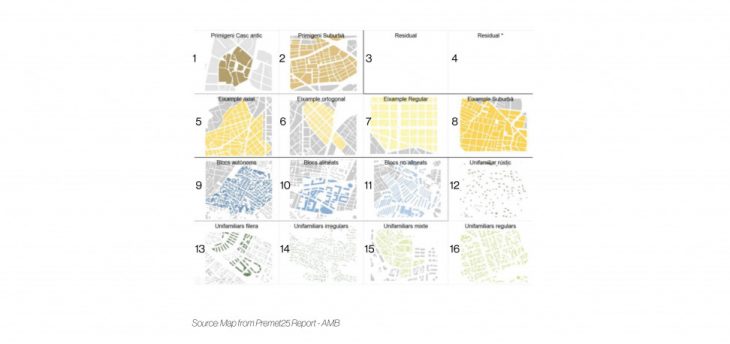
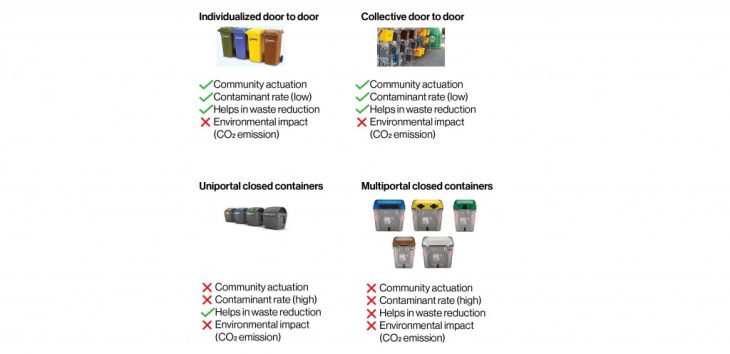
The existing collection system includes the individualized door-to-door, collective door-to-door, uni-portal closed containers and multi-portal closed containers. Each of these methods of are assigned to an area in the city, based on its urban typologies that the municipality identifies on the left. And each of these methods impacts the described parameters differently.
What the study highlights from this information is the importance of creating a system that is much more efficient in terms of environmental impact, contaminant rate, waste reduction and community actuation.
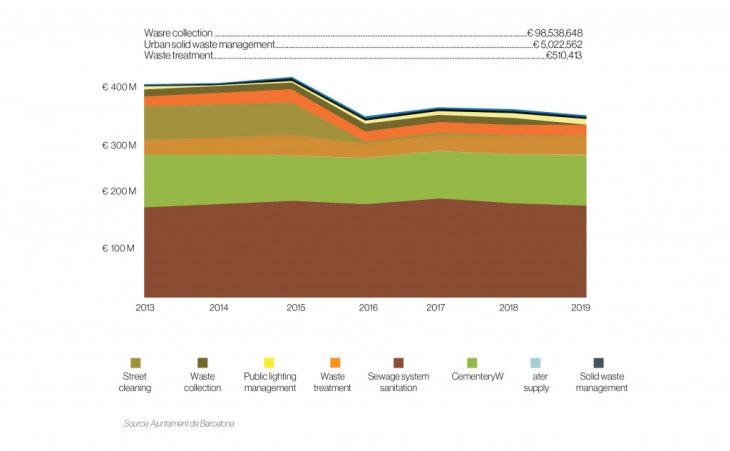
On top of that, this system proves to be incredibly expensive. We can deduce from this chart that the cost of waste collection in the city is among the highest in the municipal budget.
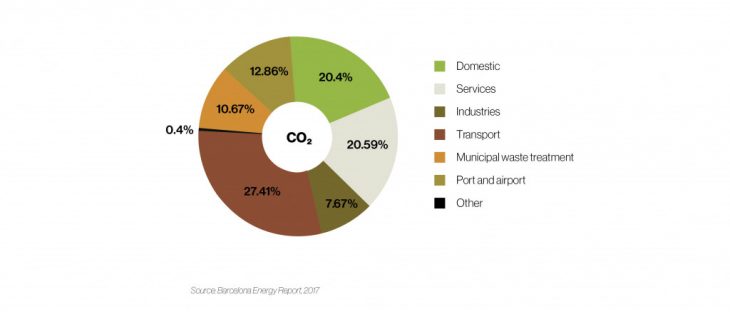
And this expensive system comes with great CO2 impact. The municipal waste treatment alone emits 10,6% of the total CO2 emissions in the city. And because of the lack of data on the amount CO2 emissions from the collection and transportation of waste, a calculation has been done to approximate the emissions from waste collecting trucks.
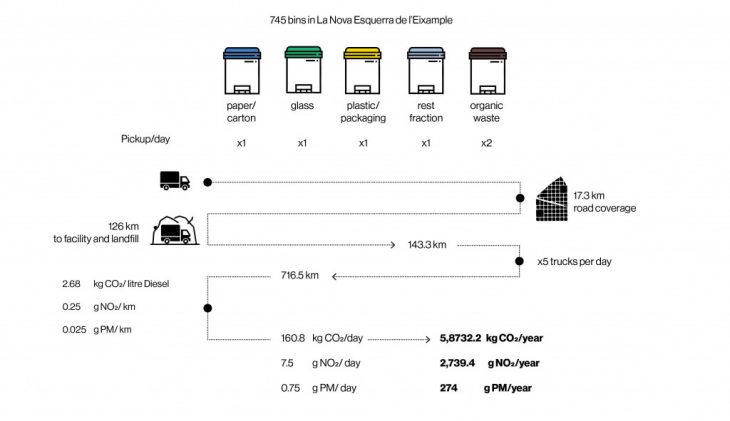
This diagram shows the total travel distance that a truck has so to do to collect the waste and take it to their respective facility, multiplied by 5 assuming there is one truck collecting one type of waste bin and extracted the final amount of CO2, nitrogen dioxide and particulate matter emitted in the case study neighborhood.
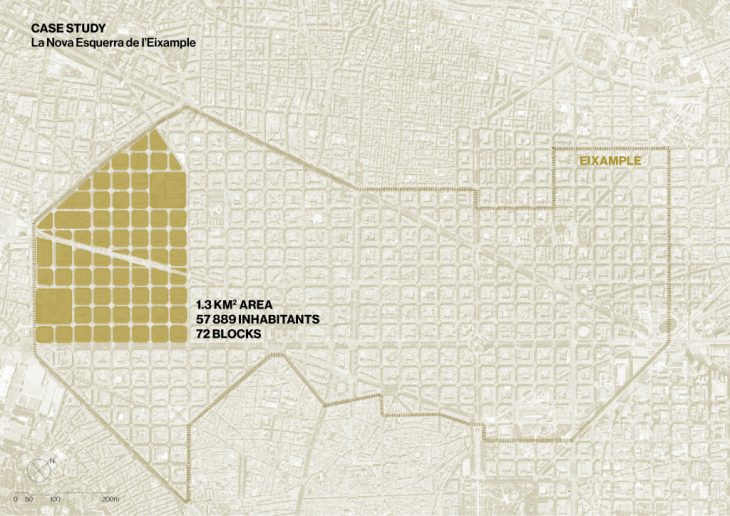
In the case study neighborhood of La Nova Esquerra de l’Eixample , almost 6 tonne of CO2 is emitted every year. And this leaves us with the question of how the waste collection system in the city can be reconsidered?
These observations lead the project to formulate its hypothesis in the following matter: Within the scope of big data and generative design, optimization based methodologies help planners and decision makers in studying and designing a distributed neighborhood scale waste management strategies and infrastructure.
Application
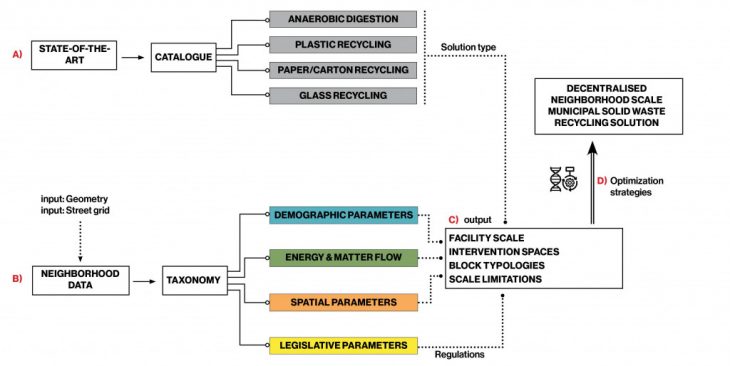
The methodology conducted consists of different steps. From previous state-of-the-art research, micro-scale recycling solutions that can be implemented in the urban context are extracted and a catalogue of their mechanism is produced.
A) Solution: Anaerobic digestion
In this project, [barRi]cycle focuses on the application of anaerobic digestion. This system recycles organic waste by producing biogas and compost.
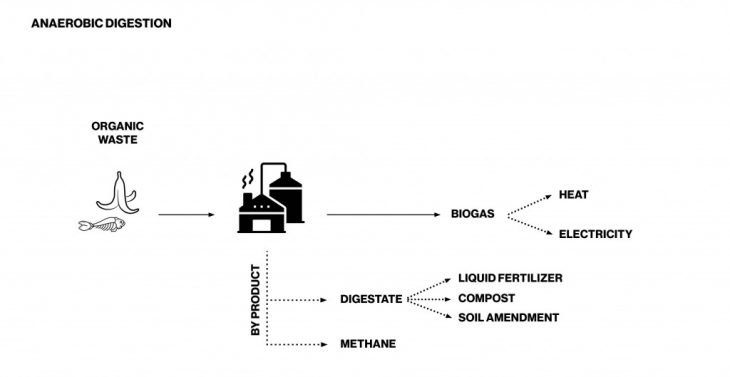
Biogas can be transformed into heat and electricity, and as by products, we obtain liquid fertilizers, compost and soil amendment, as well as some methane emission depending on the scale of the facility.
As previously mentioned, modularity in micro-scale recycling solutions are important, which is why the components are represented in simple geometries and configurations. With fragmented configurations having the least footprint, they are more suitable to apply in complex urban fabrics where there are different sorts of spaces.
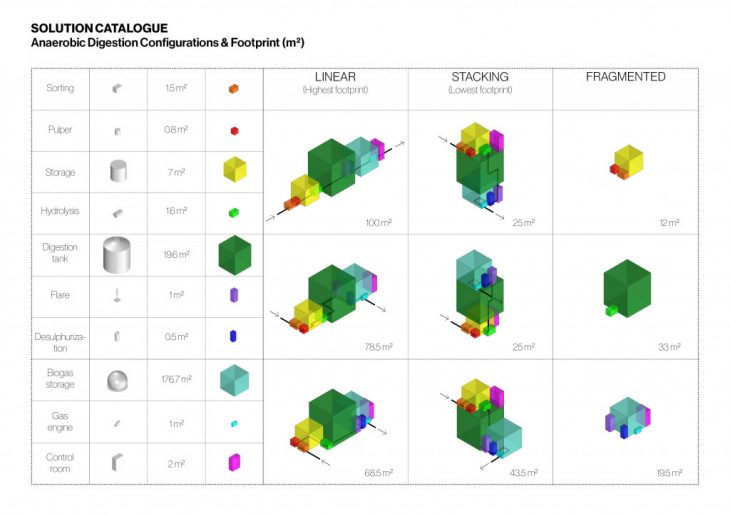
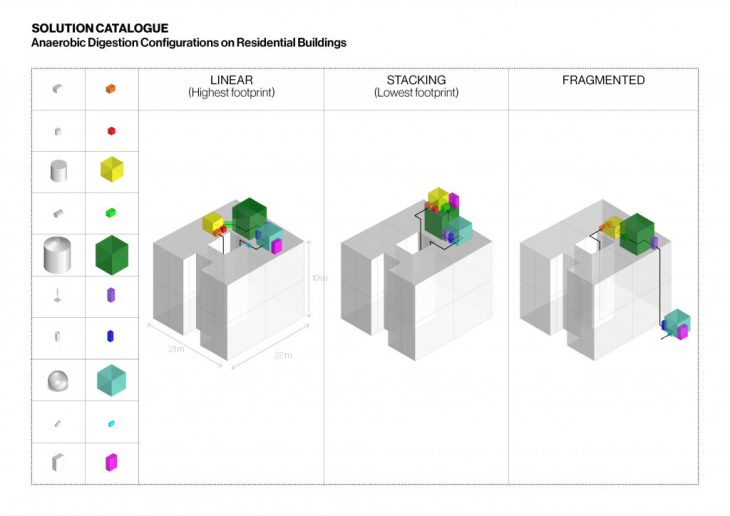
B) Neighborhood data: Datasets for urban taxonomies
In parallel, the neighborhood data creates four groups of parameters for the urban taxonomy. These parameters contain each different datasets.
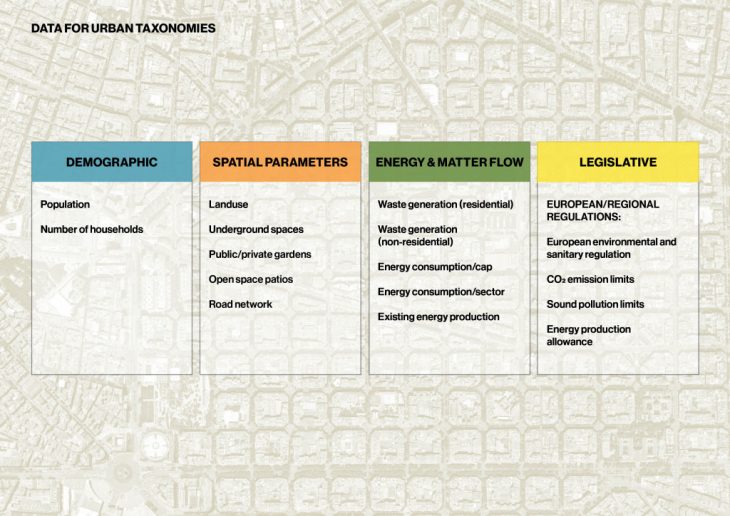
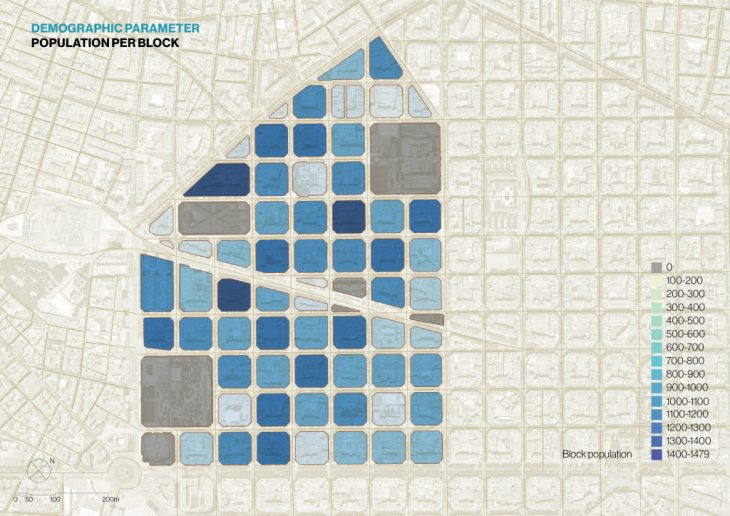
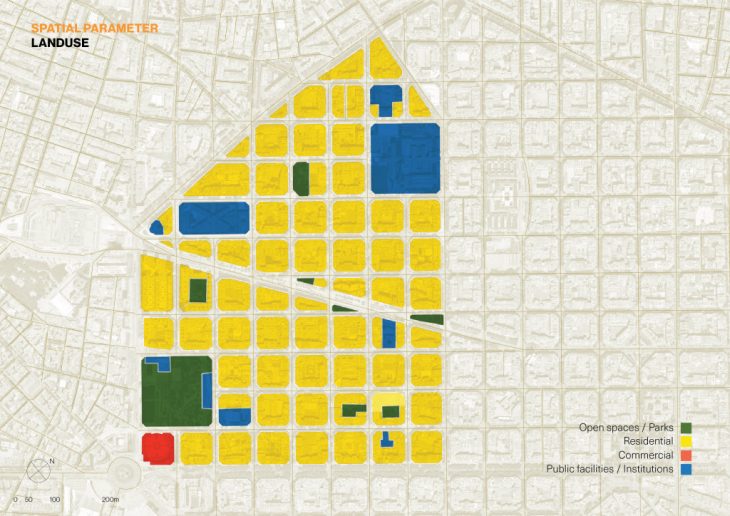

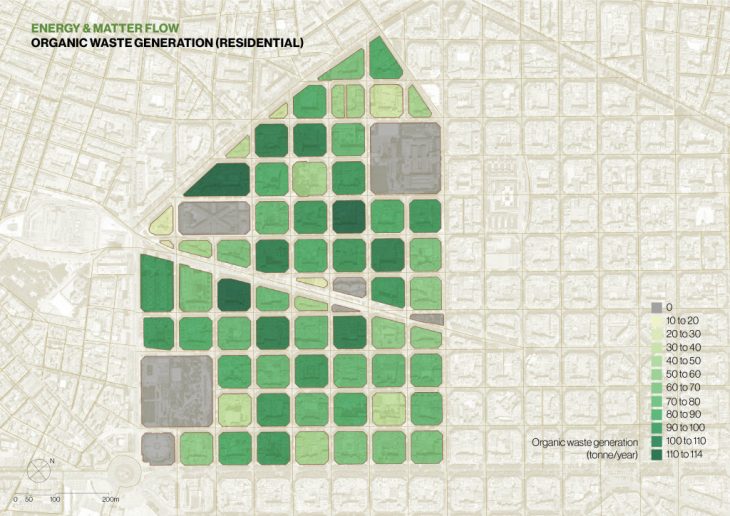
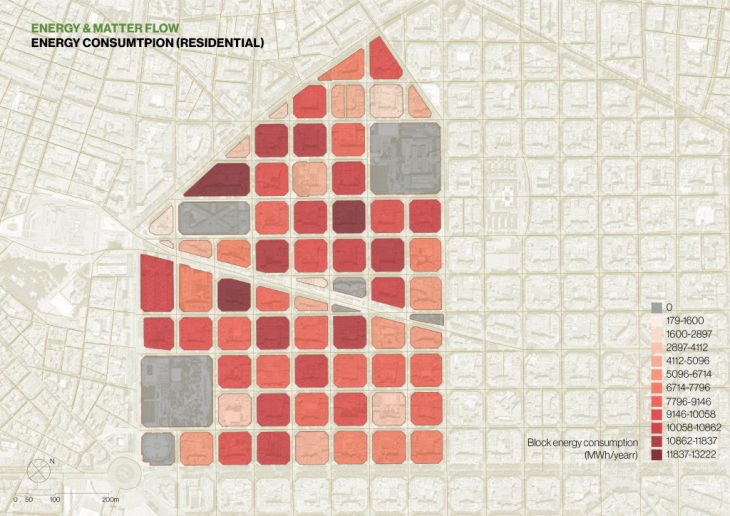
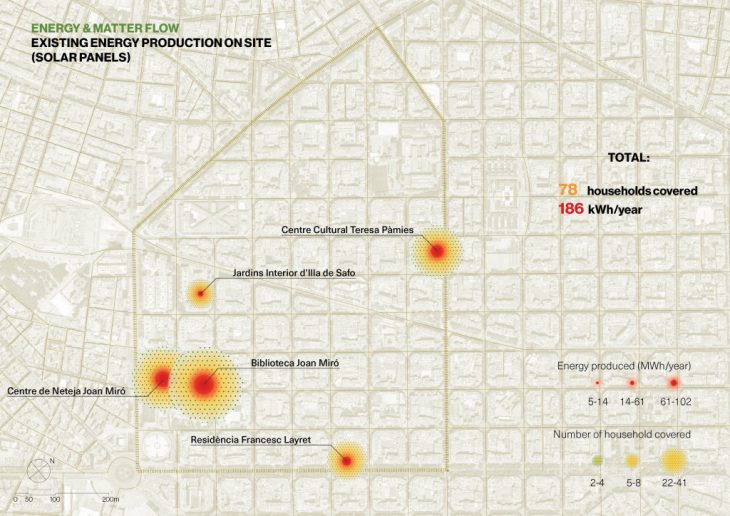
C) Outputs
From the data of population and waste generation, we can understand the flow of matter in the neighborhood and decide on the scale of the facility. From the spatial and legislative parameters, we can extract the intervention spaces to place the recycling system.
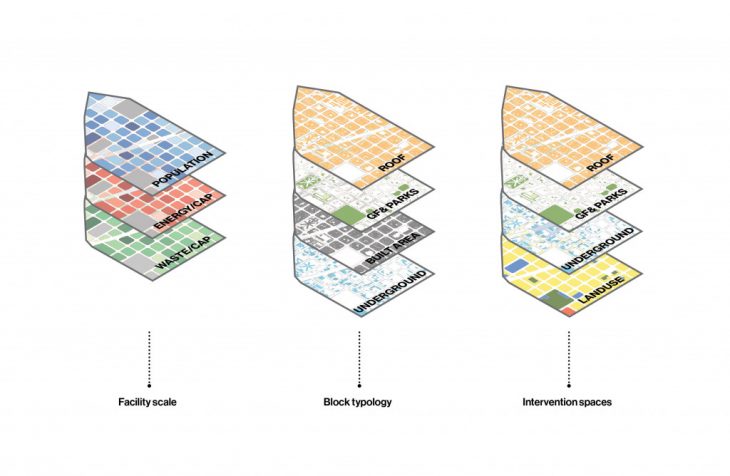
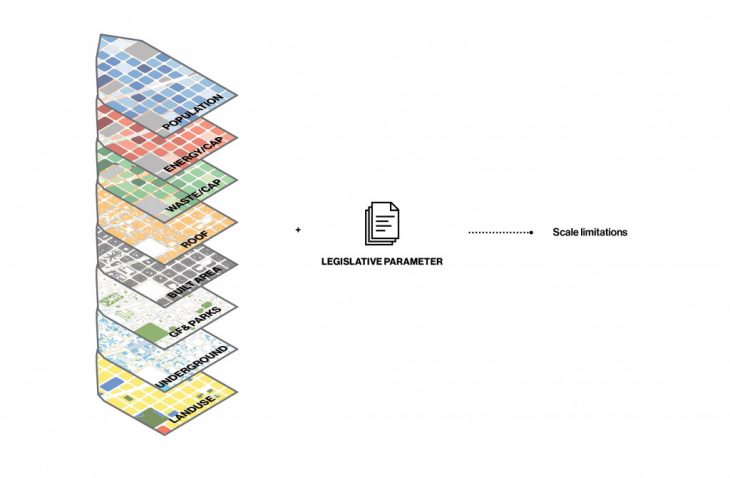
And finally the legislative parameters provide the regulations to respect the scale of the system within a neighborhood.
For the facility scale, this project uses the following equation that will give me the size of the digestor tank. The remaining component size of the system depend on the size of the digestor.

This project will be using three different facility scales as demonstrated in the table below. The scales are selected according to the minimum and maximum facility size needed (1 tonne capacity and 5 tonne capacity) for the least and most organic waste generators of a block, and a scale in between (3 tonne capacity).
The anaerobic digestion components previously shown are grouped into two parts to achieve a fragmented configuration. The first group contains the sorting, pulper, storage, hydrolysis, digestor tank and control room, that will be placed in the underground. And on the other contains the flare, desulphurization, gas tank and engine that will be grouped to be placed either on the open patios or roofs.
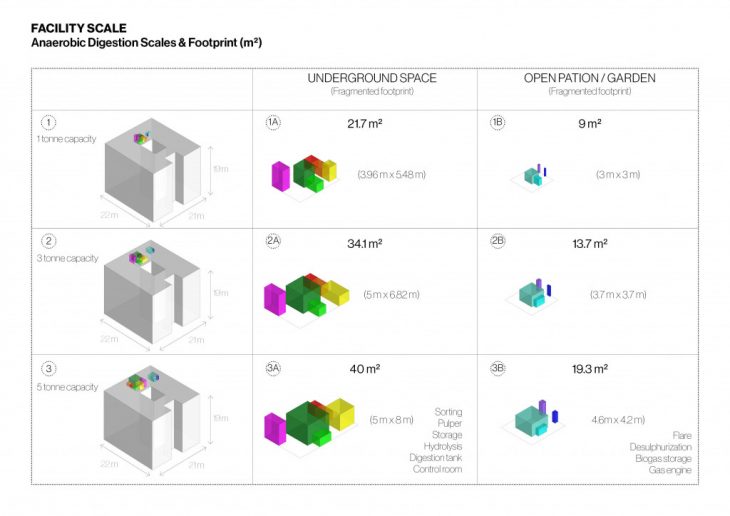
The potential intervention spaces include the roof space, the built environment, the open patios and gardens, and the underground space. These intervention spaces go through a filtration process to only keep the areas that are suitable and capable to host the facility components.
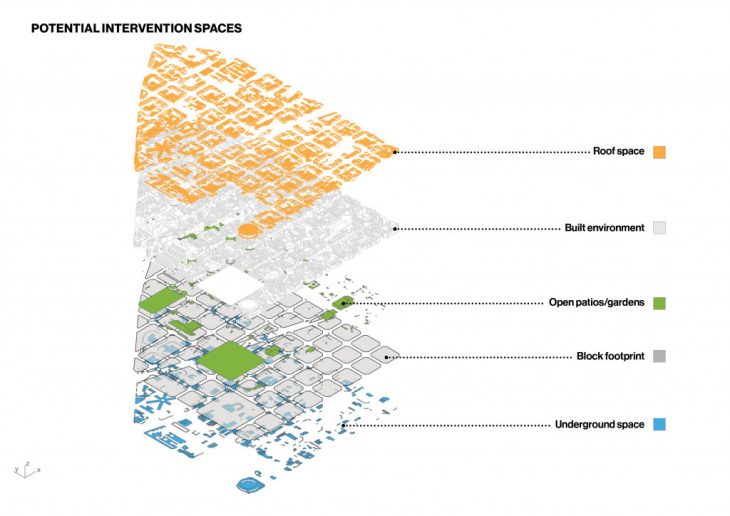
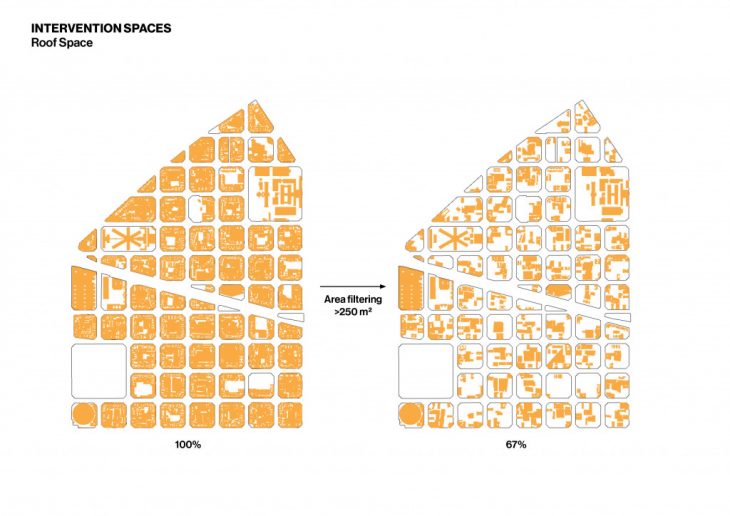
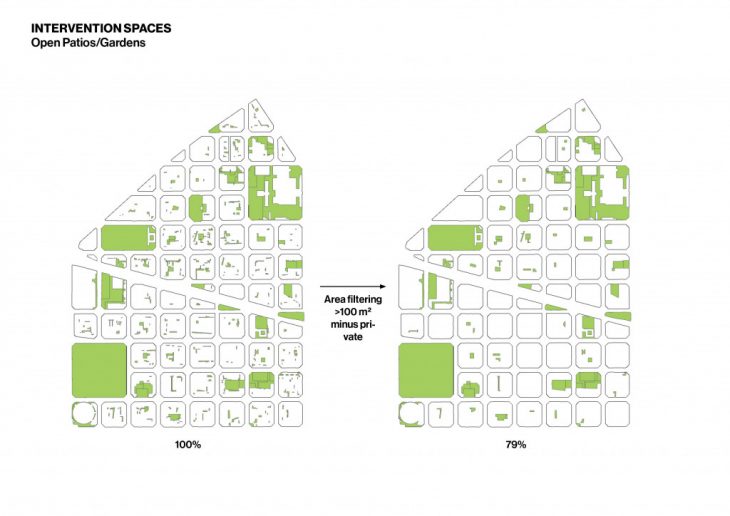
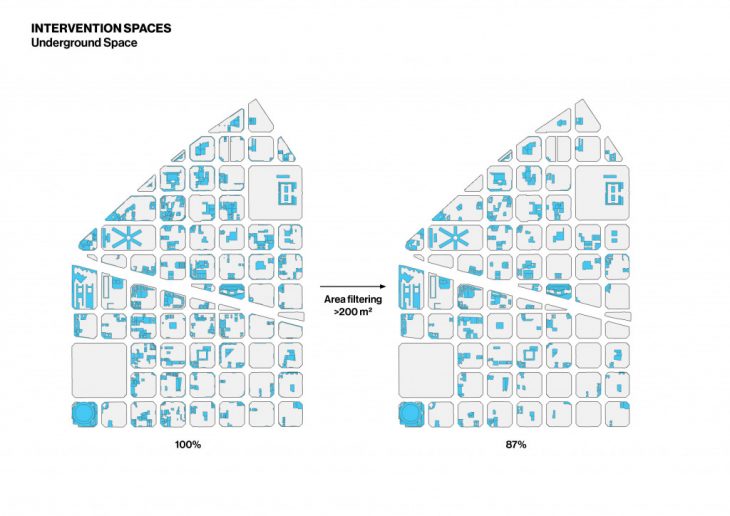
The filtered areas of the roof space, ground floor patios and underground space are then overlapped to extract block typologies.
This process filters out the blocks that only contain commercial buildings or parcs (white), identifies the blocks that do not have the necessary space for intervention (red), and identifies the remaining blocks that have the necessary spaces to host the recycling system (yellow).
D) Optimization strategies
The final step of the methodology is to apply optimization strategies on the extracted block typologies to obtain a decentralized organic waste recycling system in blocks at the neighborhood scale.
The optimization methods are the following:
1- Based on the organic waste generation of the red blocks, the surrounding blocks will undergo a calculation to understand which have the availability of space to recycle the incoming waste, where will it take place and what scale.
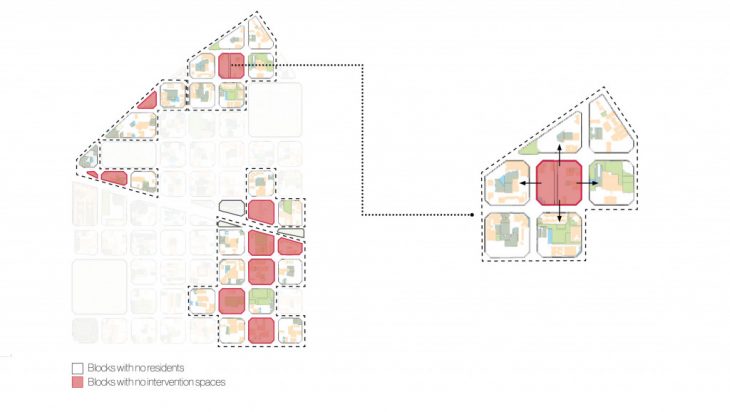
2) Genetic optimization algorithm will be applied on yellow blocks hosting the system to receive the optimum dimension and location of the system. Two different typologies are extracted based on two different system configurations. Underground and roof configuration and underground and ground floor configuration. Below, the short video demonstrates how the algorithm optimizes the allocation and scale of the facilities on a underground-ground floor block typology.
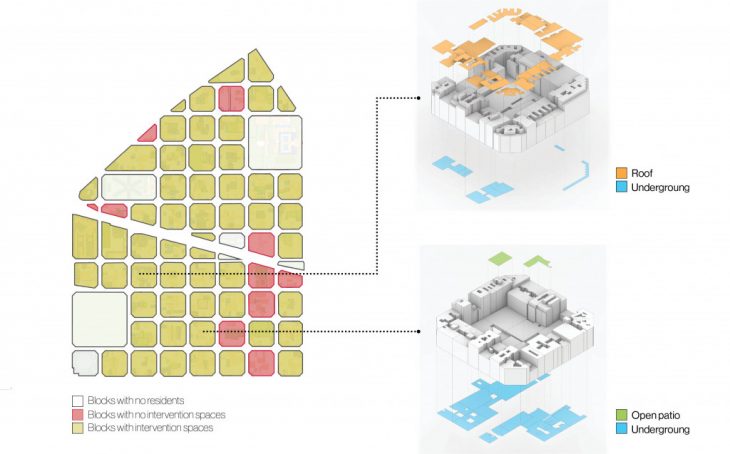
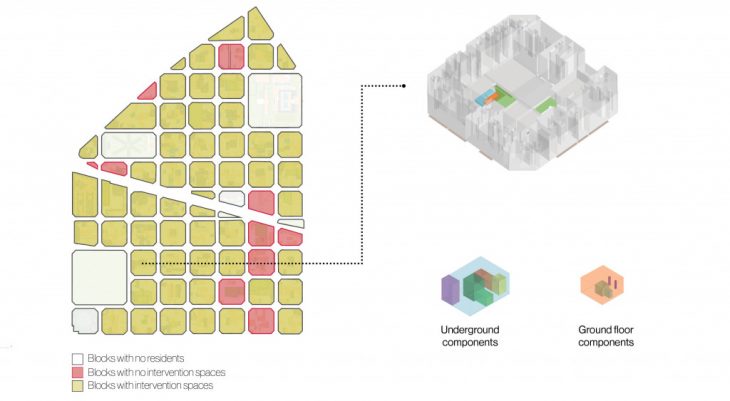
The pseudo-code below explains the variable parameters and the optimization objective used in the algorithm: the methodology minimizes the distance from the underground component to the road, and minimizes the distance between the 2 component groups.
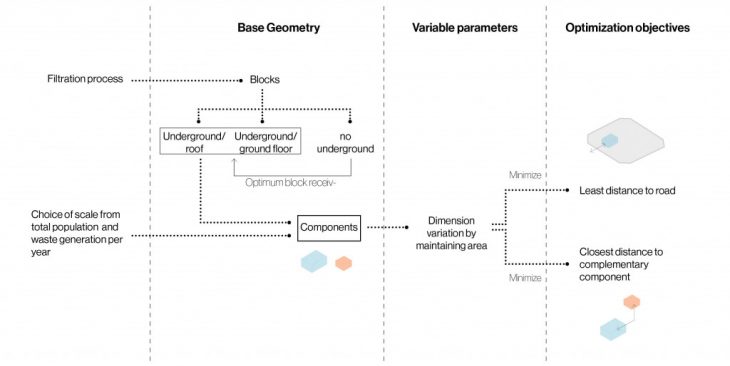
We can visualize below a conceptual animation of the red blocks and yellow blocks being activated, with some of them optimized to host a larger recycling system to receive more waste.
This exploded isometric of a block demonstrates how the matter and the energy flow takes place.
Assessment
From the previously assessed impact of the current waste management, this project can now compare how this system performs in the neighborhood.
This map shows how much energy can be produced from this system and how many households it could cover. From the estimated calculations, the neighborhood can cover 3.48% of the energy demand and cover almost 900 households, which is equivalent to 2 whole blocks.
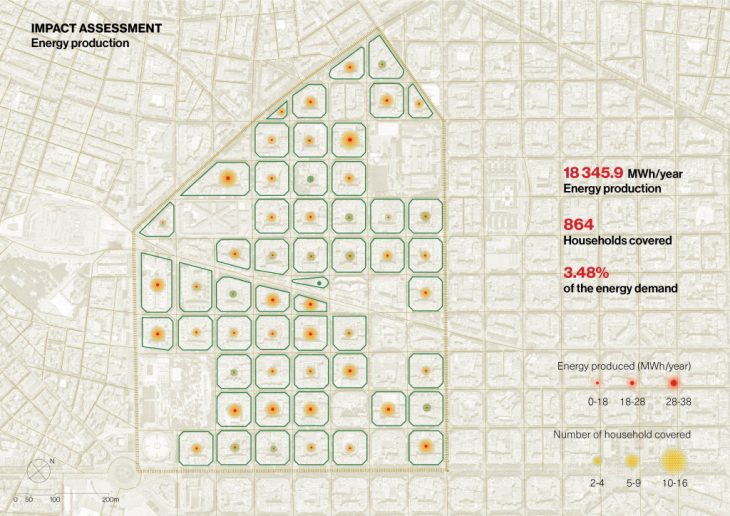
And from the by-products of the anaerobic digestor, 2000 tonne of compost and 1000 tonne of liquid fertilizer can be sent to local farms and food production sites every year.
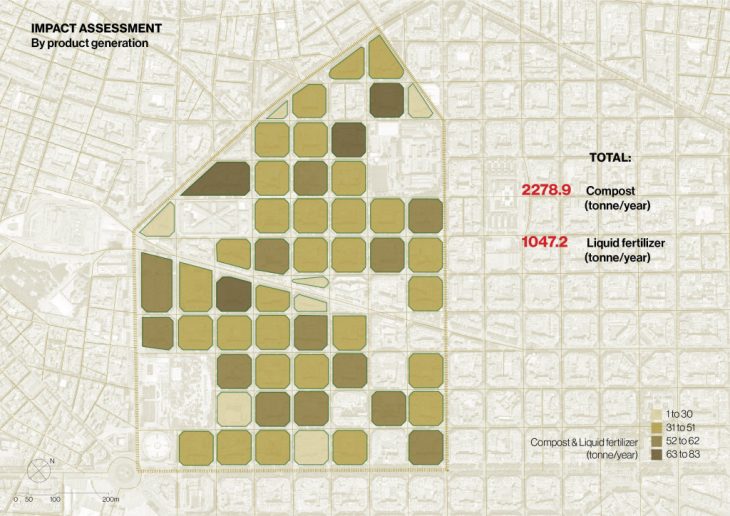
Other benefits from this system is the reduction of trucks for waste collection in terms of greenhouse gas emissions. This proposal could estimate a 20% reduction in CO2, NO2 and in PM per year only from the removal the organic waste containers in a neighborhood. We could imagine how much the transportation sector could be improved if this was applied to all the waste fractions and in every neighborhood of the city of Barcelona.
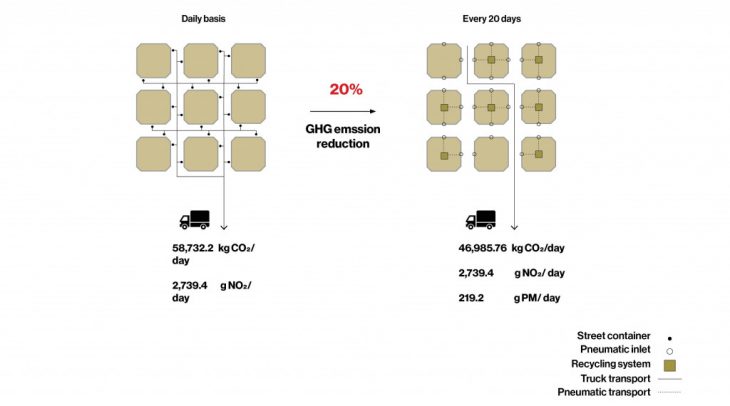 It is worth noting that such systems do have an ecological footprint but on the long run, it could have a much greater impact in terms of the reduction of contaminants found in collected waste, reduction in the amount of waste in landfills and decrease in pollution from transportation and collection system, like many researches have proven.
It is worth noting that such systems do have an ecological footprint but on the long run, it could have a much greater impact in terms of the reduction of contaminants found in collected waste, reduction in the amount of waste in landfills and decrease in pollution from transportation and collection system, like many researches have proven.
As for future development, it will be interesting to assess how other waste recycling solutions could be embedded in the blocks of a neighborhood, how they would work together as an interconnected system and also expand the spacial analysis with more data to be able to apply this methodology on other neighborhoods that have different urban typologies.
[barRi]cycle is a project of IaaC, Institute for Advanced Architecture of Catalonia
developed at Master in City & Technology in (2018/2020) by:
Student: Sarine Bekarian
Faculties: Areti Markopoulou, Mathilde Marengo
